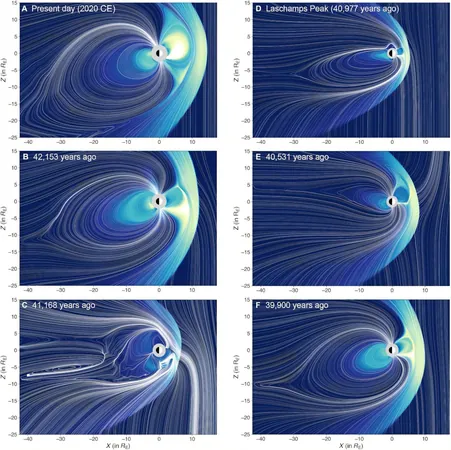
Did Earth's Magnetic Shift Spell Doom for Neanderthals?
2025-06-19
Author: Jacques
Unraveling the Mystery of Neanderthal Extinction
For centuries, the extinction of Neanderthals has puzzled scientists, leaving us with more questions than answers. However, a recent groundbreaking study from the University of Michigan, published in the journal *Science Advances*, has reignited this debate with a bold new hypothesis: could astrophysical phenomena have played a crucial role?
Astrophysicist Makes Bold Claims
Led by Agnit Mukhopadhyay, a space physicist who specializes in natural plasmas, the research suggests that an astonishing shift in Earth’s magnetic poles around 41,000 years ago, known as the Laschamp event, might have spelled disaster for Neanderthals. Mukhopadhyay theorizes that during this period, the weakening of Earth's magnetic field allowed cosmic and ultraviolet radiation to penetrate more aggressively, creating harsher living conditions.
Homo Sapiens’ Survival Advantage
This increased radiation could have given Homo sapiens an adaptive edge. While Neanderthals struggled against the environmental onslaught, early humans utilized close-fitting clothing, ocher for sun protection, and sought refuge in caves—shared spaces that both species occupied.
Questioning Clothing Assumptions
Central to Mukhopadhyay's theory is the assertion that Neanderthals lacked the ability to create tight-fitting clothing, leaving them vulnerable to harmful solar rays. While it is true that sewing needles, believed to be essential for creating fitted garments, weren't found in Neanderthal archaeological sites, this does not conclusively prove they lacked clothing altogether. Evidence suggests that early humans, too, faced severe cold without such technology but managed to craft suitable garments.
Protective Ocher: More Than Just A Fashion Statement?
Interestingly, the study emphasizes the use of ocher by Homo sapiens as a potential sunscreen against UV rays. However, ocher has been found in Neanderthal contexts as well, indicating its use likely transcended species boundaries, serving various purposes beyond mere sun protection.
Population Size and Technological Disparities
Another crucial aspect of this debate lies in the stark difference in population sizes. With fewer Neanderthals existing at the time, they were vulnerable to assimilation by the more populous Homo sapiens. This integration is reflected in the genetic makeup of modern humans, suggesting that rather than facing complete extinction, Neanderthals were absorbed into the evolutionary lineage.
Disputing the Simplistic Explanation
While Mukhopadhyay's assertions are intriguing, they risk oversimplifying the complex nature of Neanderthal extinction. There’s scant archaeological evidence linking their decline directly to the Laschamp event, nor has a widespread demographic collapse been documented to coincide with this magnetic shift. If solar radiation were truly a major threat, one would expect it to impact sapiens populations equally, yet evidence suggests that didn’t happen.
A More Nuanced Understanding Needed
The Neanderthals were not merely victims of ineptitude or environmental failure. They were an adaptable species that thrived for over 300,000 years, skillfully surviving numerous climatic changes, including geomagnetic shifts. Their advanced tool use and territorial dominance reveal a complexity that challenges simplistic narratives.
So, Did the Earth's Magnetic Shift Spell Doom for Neanderthals?
The evidence leans towards a resounding 'probably not.' While the magnetic reversal certainly presented formidable challenges, it was likely just one of many factors contributing to the Neanderthals' decline. As we delve deeper into this ancient mystery, it becomes increasingly clear that the story of Neanderthal extinction is a tapestry of complex interactions rather than the result of a single cosmic event.









 Brasil (PT)
Brasil (PT)
 Canada (EN)
Canada (EN)
 Chile (ES)
Chile (ES)
 Česko (CS)
Česko (CS)
 대한민국 (KO)
대한민국 (KO)
 España (ES)
España (ES)
 France (FR)
France (FR)
 Hong Kong (EN)
Hong Kong (EN)
 Italia (IT)
Italia (IT)
 日本 (JA)
日本 (JA)
 Magyarország (HU)
Magyarország (HU)
 Norge (NO)
Norge (NO)
 Polska (PL)
Polska (PL)
 Schweiz (DE)
Schweiz (DE)
 Singapore (EN)
Singapore (EN)
 Sverige (SV)
Sverige (SV)
 Suomi (FI)
Suomi (FI)
 Türkiye (TR)
Türkiye (TR)
 الإمارات العربية المتحدة (AR)
الإمارات العربية المتحدة (AR)